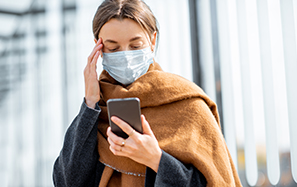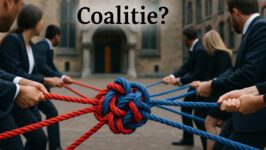First, this article demonstrates why influenza isn't prone to superspread events and COVID-19 is. Next, I will explain how we can use controlled experiments to determine what measures work and under what circumstances, in order to formulate a much more effective approach that limits the damage done to the economy and society.
Lees volledig artikel: That’s why superspread events are so special
That’s why superspread events are so special
In the rapid spread of the COVID-19 virus, the “superspread events” play a major (even crucial) role, as I explain here.
But why didn’t we know them before with influenza (flu)?
Suddenly it dawned on me. And the answer teaches us even more about the smart exit policy to be pursued. (And that’s certainly not the unfeasible and unnecessary 1.5 meter economic approach of Minister Wiebes. It will give our economy and society an even bigger blow than it has already received because of the – understandable – lock down in the Netherlands).
I’ve been researching flu since 2009 via Peil.nl. This is an article of mine from 2010. Every time during and after a flu epidemic I used the same questionnaire. This was also the case when the epidemic lasted for a long time in 2014-2015 and 2017-2018.
During the results I noticed something that I didn’t expect before, but when I saw it, I understood why it was so. Elderly people reported much less flu than young people!
Immunity
The explanation for this was that older people build up immunity in their lives to the various influenza variants that “came by” over the years. This is much less the case with young people.
With this COVID-19 virus, no one has built up immunity. So older people can be infected just as easily as younger people. Plus, we know that elderly people have a significantly higher mortality rate than young people if they are infected.
We know that in the past two months there have been many meetings where a large proportion of those present have become infected. For example, that choir near Seattle that the LA Times did such a great study on. There has also been a large choir in the Netherlands where something similar has happened.
In Korea, Mulhouse, Bergamo and Kuala Lumpur we have well-documented superspread events. Also the carnival in Brabant belongs to it. The parades because of the international women’s day in Madrid on March 8th seems to have been such an event as well.
Also during flu
This kind of events have also been there during the flu epidemics in the past. But the big difference with this Corona virus is that the people present at those events had quite a lot (and certainly the elderly) resistance against that virus. The number of people that were infected then, was therefore, much less than on those occasions now. Plus that 10 to 20% of the elderly who get infected also die.
(There is a suspicion that if you have been in an environment with flying viruses for a longer period of time, you have a greater chance of becoming seriously ill, than if that has only been for a short time. It also seems, that if it was an environment, where everyone sang loudly, like in a church or near a choir, more micro-drops would be brought into the air. An infected person among those present then it is already touched).
So after a super spread event a lot of people get sick and if elderly people were present the chance of death increases. That’s why we now realize that there are superspread events, where the Corona virus was spread en masse. While there used to be events like this, but because of the immunity of some of the people present, far fewer people were infected. So that people didn’t realize that the infection took place in such a place. And from the rebound we didn’t realize then how big the contribution of those meetings was.
But now we do know.
The superspread meetings made a huge contribution to the spread of the Corona virus. Because in the Netherlands we have made it impossible for it to spread since the third week of March (except for the church meetings with up to 30 visitors) this spread no longer takes place. I think that this contribution to lowering the R0, the reproduction factor, of stopping those meetings has been greater than staying at a distance from each other. Here I have worked that out arithmetically.
Whether that means that we shouldn’t be allowed to do this kind of meetings for a long time, doesn’t seem to me to be the right conclusion. On the contrary, we should try to determine very carefully in churches, theatres, cinemas and in the open air whether we can prevent large infections from taking place. By organising certain meetings. With different variants in the execution.
Variants
In any case to ensure good ventilation and the right level of humidity.
Preferably in rooms with high ceilings.
Do not sing together.
In the first phase only people under 30, 40 years of age.
To be tested by meetings with mouth caps and without mouth caps.
Make a good record of who was present and let the people present promise to participate in research. Agree that if someone falls ill they will report it.
Plus one week after the meeting and two weeks afterwards, sending everyone a questionnaire and establishing whether any infections have taken place.
On this basis we learn what is going well and where the problems are.
I wouldn’t be surprised if we could actually go to the theatre and cinema with mouth protection quite soon. And that festivals in the open air, under certain conditions, can be held soon as well.
In the meantime, if we learn through this approach, which makes these kinds of activities possible and what you can’t do, then we’re just on our way to the new normal.
Just shouting that we have to do everything at 1.5 meters from now on is not only impractical, but also completely unnecessary. Plus that the disadvantages for the economy and society are far too great.
You have just read: That’s why superspread events are so special.







